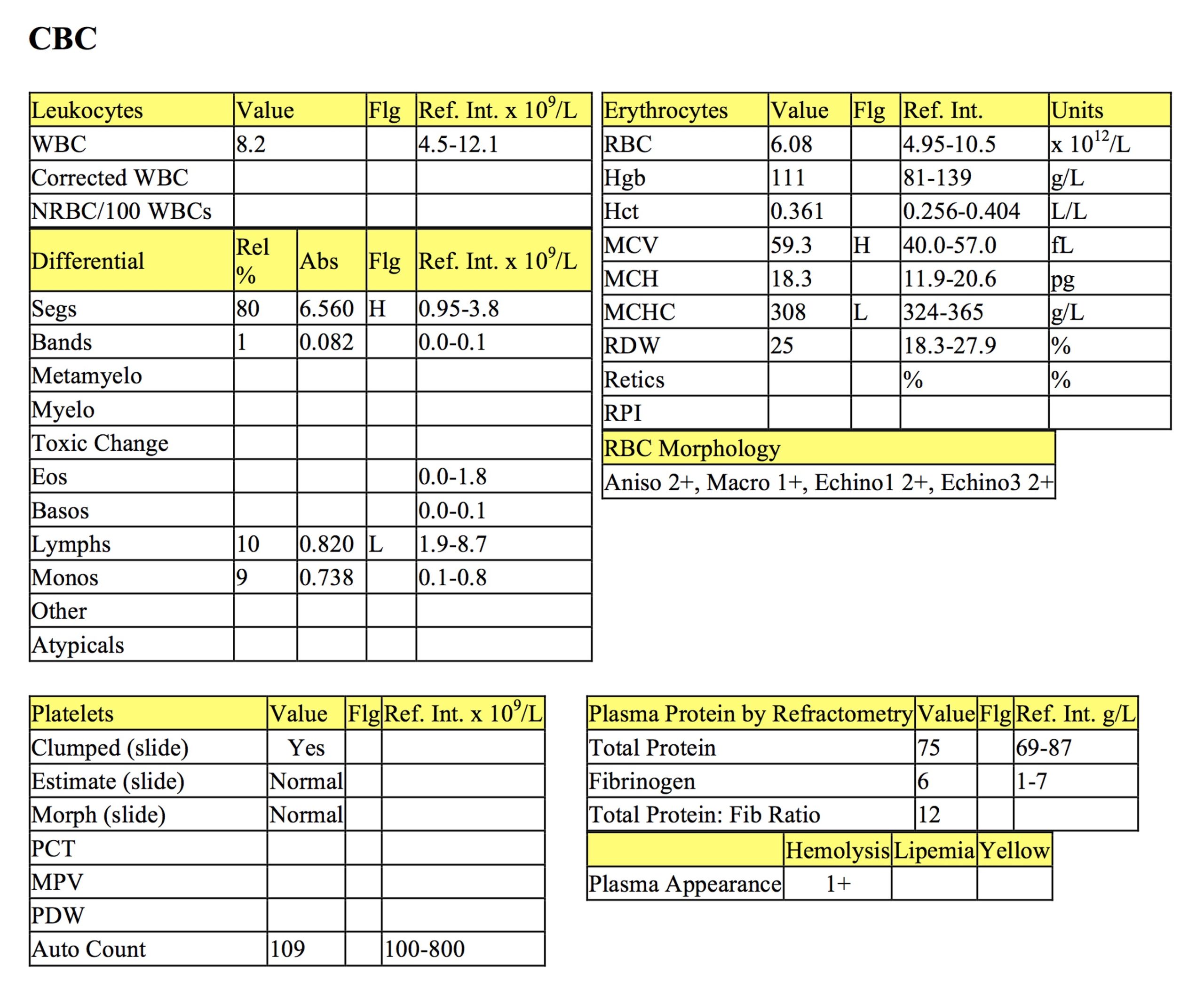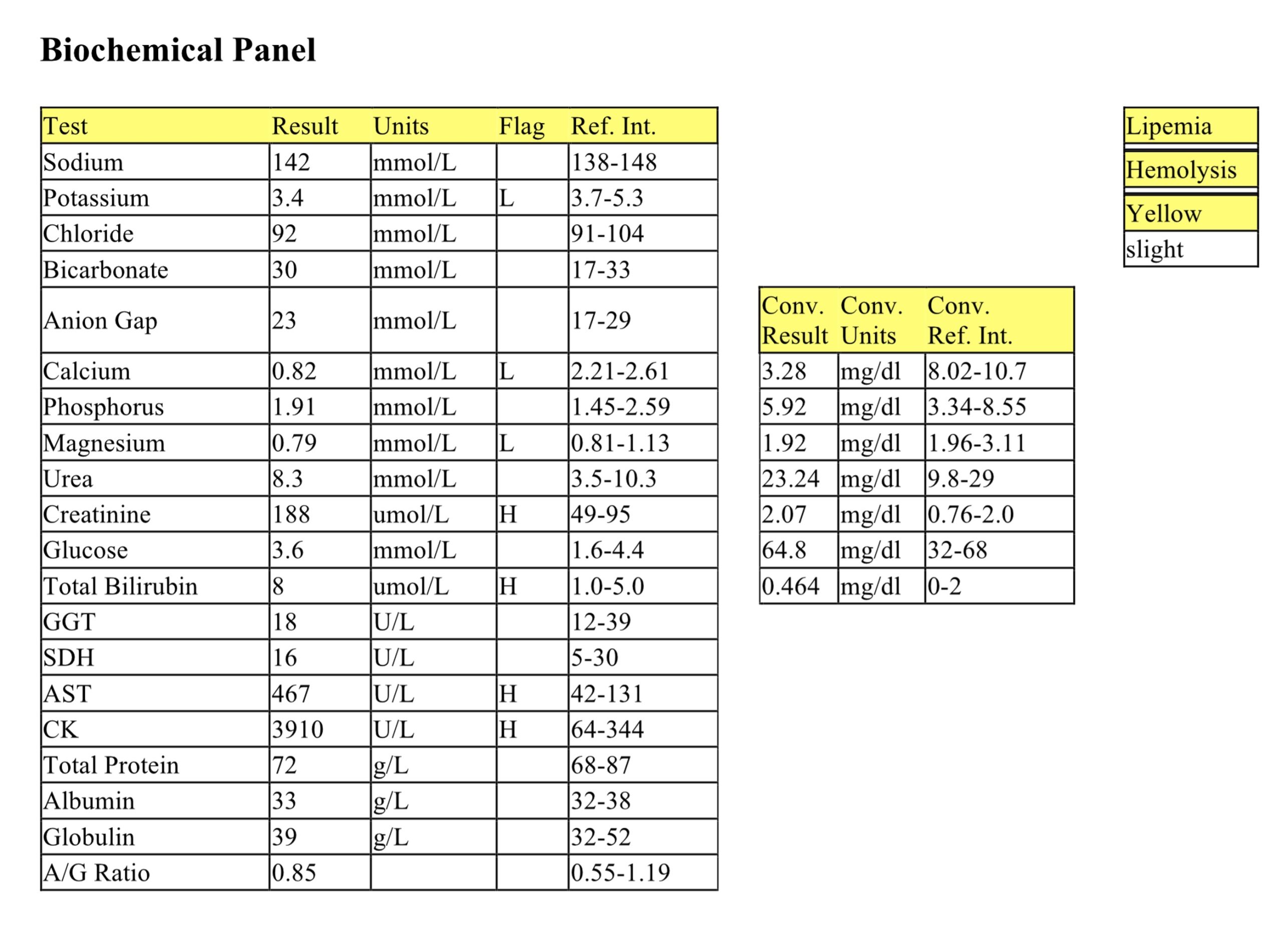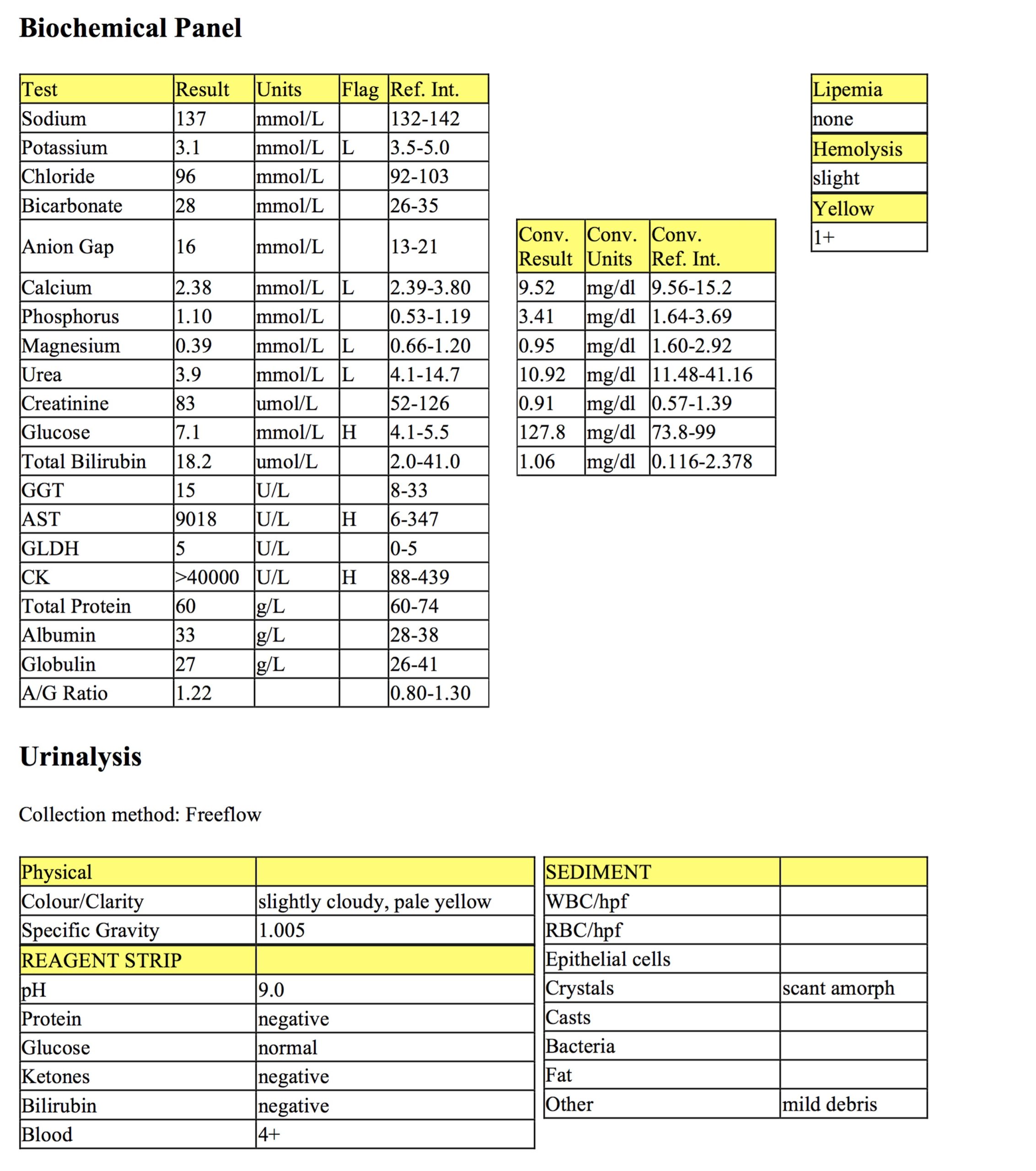Case Studies
Case 1: Petunia
Petunia, a 14-year-old Holstein-Friesian X cow, was recumbent and treated for milk fever 3 days ago. She got up 1 day later but became recumbent again today. Blood was collected before treatment with IV calcium.


CBC
Mildly increased MCV and decreased MCHC are likely not significant given the lack of anemia or polychromasia. Echinocytes III can be seen with electrolyte imbalances. The leukogram reflects stress and there is a reversal of the N:L ratio (typical of stress in cattle).
Biochemical Panel
Mild hypokalemia is likely due to decreased intake. Marked hypocalcemia reflects postparturient hypocalcemia (milk fever) and is the reason this cow is recumbent. Calcium concentrations <1.5 mmol/L lead to recumbency, while concentrations <0.9 mmol/L can be fatal. Mild hypomagnesemia is likely due to decreased intake. Mild increase in creatinine may be of prerenal, renal, or postrenal origin (urine specific gravity would be helpful but a urinalysis was not performed). Mild increase in bilirubin likely reflects anorexia. Mild increases in CK activity are due to recumbency and increased AST activity is also likely due to recumbency given the lack of SDH and GLDH increases. CK and AST activity are often extremely high in recumbent cattle- in this case, their activity may have been higher 3 days ago when Petunia was recumbent but then started to decrease when she got up. They may be rising again now that she is recumbent again.
- No follow up is available for Petunia.
Case 2: Nevada
Nevada, a 3-year-old Quarter Horse mare, was presented with signs of colic and has been on fluids for 3 hours. Clinical suspicion of tying up.

Biochemical Panel
Mild hypokalemia, very mild hypocalcemia, and moderate hypomagnesemia may all be due to decreased intake and/or fluid therapy. Mildly decreased urea may also be due to fluid therapy. Mild hyperglycemia indicates stress. Markedly increased AST activity reflects muscle injury given the lack of increased activity in other enzymes indicating liver damage. Markedly increased CK activity indicates muscle injury.
Urinalysis
Hyposthenuric urine may reflect fluid therapy. 4+ blood may reflect myoglobin given the biochemical panel findings, but hemoglobinuria and hematuria cannot be ruled out. Hematuria is usually ruled out if RBC are not seen in the urine sediment, however, RBC may lyse when urine is dilute, as it is in this case.
CK and AST ongoing results

CK activity peaks on day 1 and then declines rapidly by day 4. AST activity peaks on day 2 and declines much more slowly than CK. This pattern is consistent with a single acute muscle injury that is resolving.
- Nevada was suspected of having polysaccharide storage myopathy (PSSM), a disease leading to exertional rhabdomyolysis even after mild exercise. Genetic testing of a hair sample confirmed PSSM type 1.
Nevada was managed with regular daily exercise and a strict diet, but horses with this condition often have recurrent episodes of tying up.
Average erythrocyte size in femtoliters (measured or calculated PCV or Hct÷RBC).
Average concentration of hemoglobin per erythrocyte (calculated: hemoglobin÷hematocrit).
Decrease in hematocrit (PCV) recognized on the complete blood count (CBC); usually hemoglobin concentration and RBC numbers are also decreased.
Increased numbers of anucleate, immature erythrocytes that stain bluish-pink with Romanowsky stains due to the presence of cytoplasmic RNA.
Erythrocyte with even projections all around its membrane; often an artifact but can be a pathologic change. Echinocytes are classified as types 1 and 3 depending on the length and sharpness of the projections (spicules).
All tests on the CBC that evaluate leukocytes. Also, that part of the leukon which is evaluated by examination of a peripheral blood sample (typically does not include leukocyte precursors).
Break-down product of hemoglobin.

